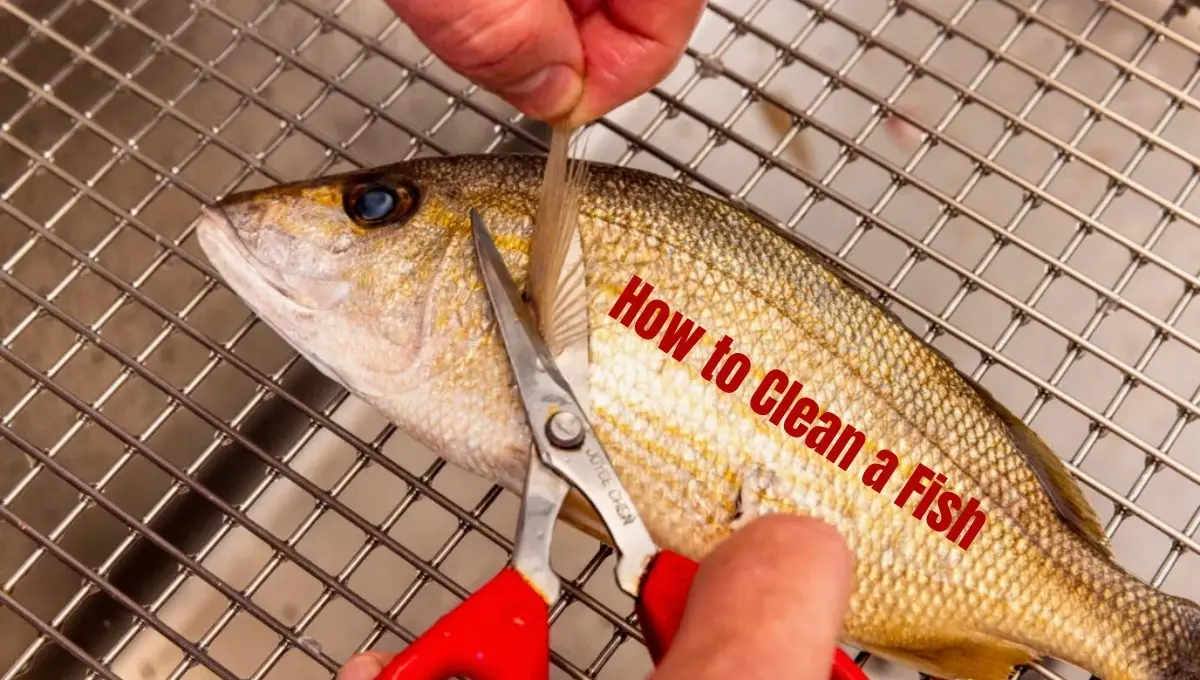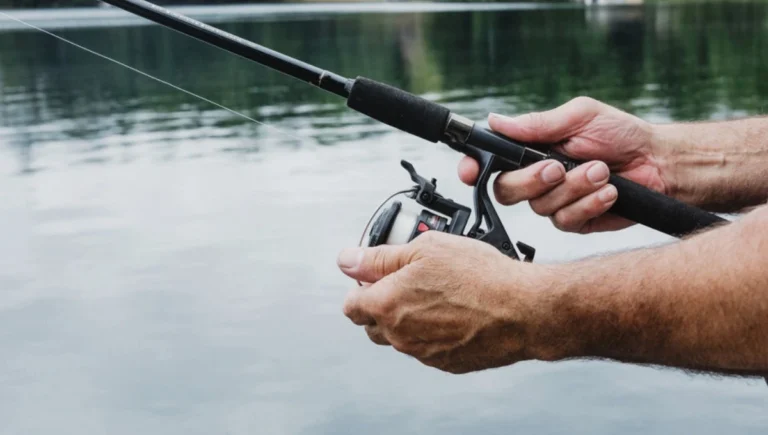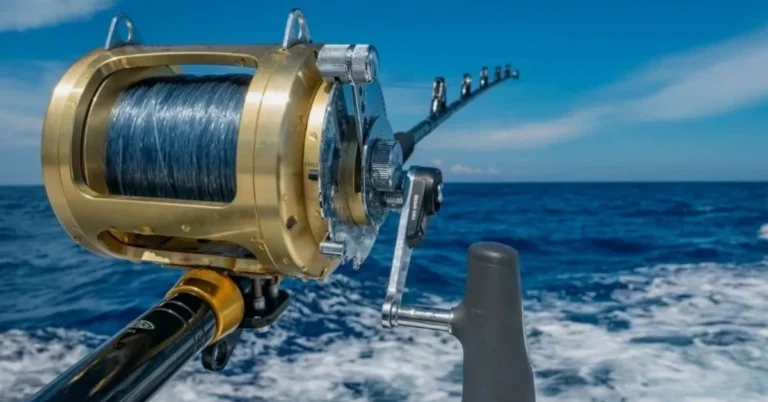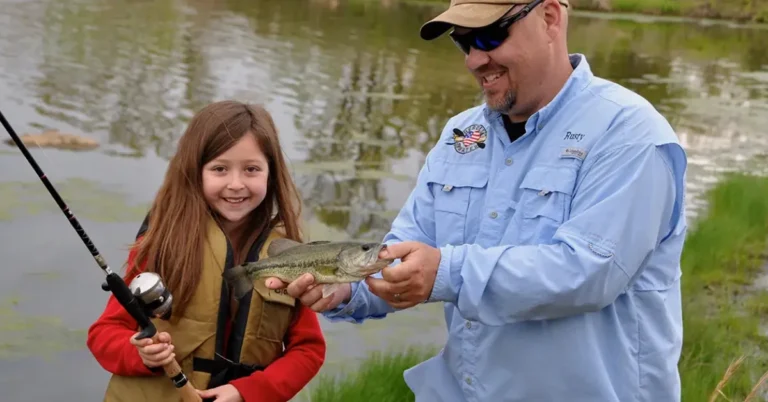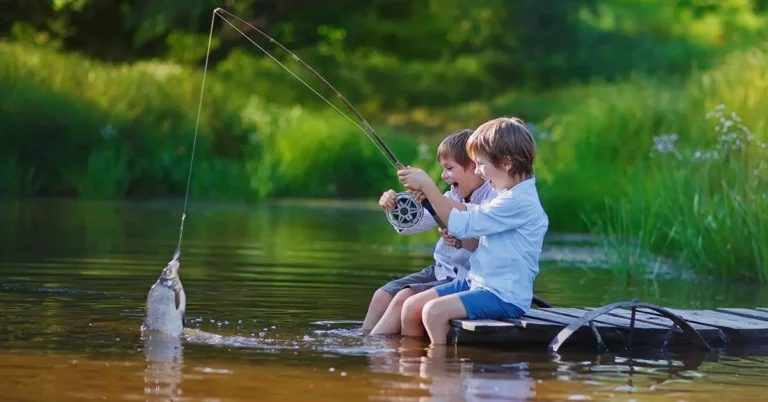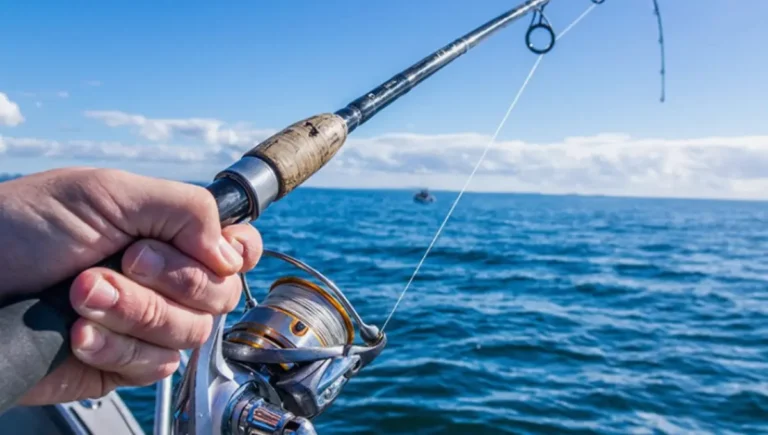How to Clean a Fish: Detailed Top 7 Step-by-Step Guide?
Embarking in the process of cleaning a fish involves several essential steps. Whether you’re a seasoned angler or a beginner, this detailed guide will walk you through the intricacies of preparing your catch for cooking. Ensuring the proper fish cleaning is crucial for achieving the best flavor and maintaining freshness.
From removing guts, gills, blood, and scales to adopting specific techniques based on the type and size of the fish, this guide covers it all. Understanding how to clean a fish thoroughly not only enhances the taste of your meal but also minimizes the risk of contamination.
Whether you’re an enthusiast seeking the satisfaction of cooking up your catch or someone interested in honing the skill for purchasing whole fish, this guide provides a comprehensive introduction. It’s not just about cooking; it’s about embracing the joy of angling from the moment the fish is landed. So, let’s dive into the specifics of cleaning a fish to elevate your culinary experience.
Also Read: How To Cast A Spinning Reel: Grip, Cast, And The Fight
Top 7 Step-by-Step Guides on How to Clean a Fish
The Top 7 steps lay the fundamental groundwork for cleaning and gutting both freshwater and saltwater fish, whether you’re on a boat, at the dock, or back home.
1. Fish Bleeding Process: Materials and Procedure
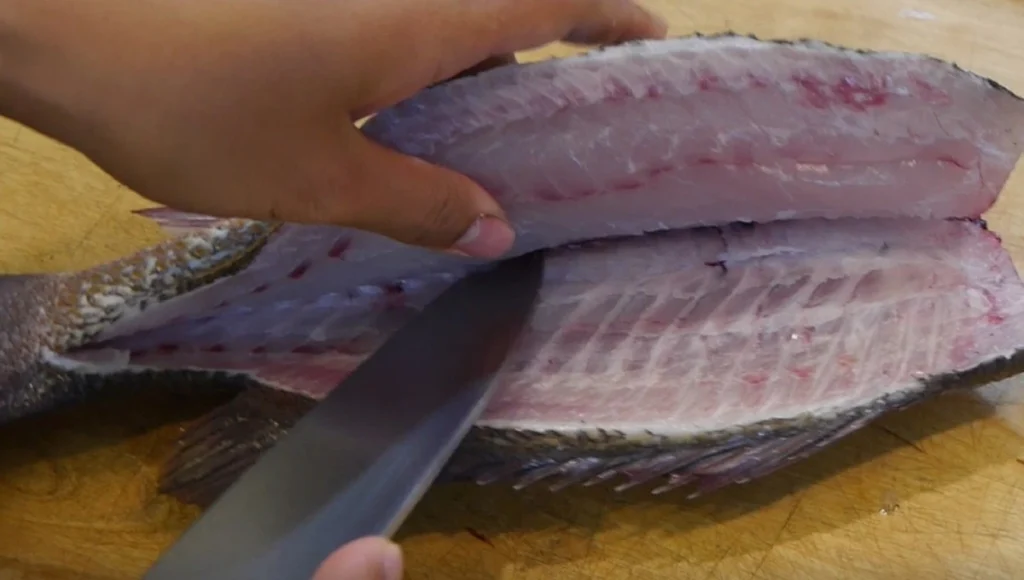
Ensuring optimal flavor in your catch involves bleeding the fish, and to achieve this, proper materials and procedures are essential. The following instructions provide a step-by-step guide on how to bleed a fish effectively.
Materials Needed:
Procedure:
Adhering to these instructions with the recommended materials ensures a proper and humane bleeding process, ultimately contributing to a more flavorful culinary experience with your catch.
2. Cleaning Station Setup: Spine-Fillet Separation

Clean and sanitize your work surface thoroughly, including your tools. Place a few layers of newspaper on your cutting board or tabletop. Have a source of clean water and a disposal container (bucket, bag, etc.) nearby.
To avoid puncturing the intestines, ensure the knife blade remains shallow during the process.
3. Fish Preparation: Scaling, Rinsing, and Spine/Ribcage Separation
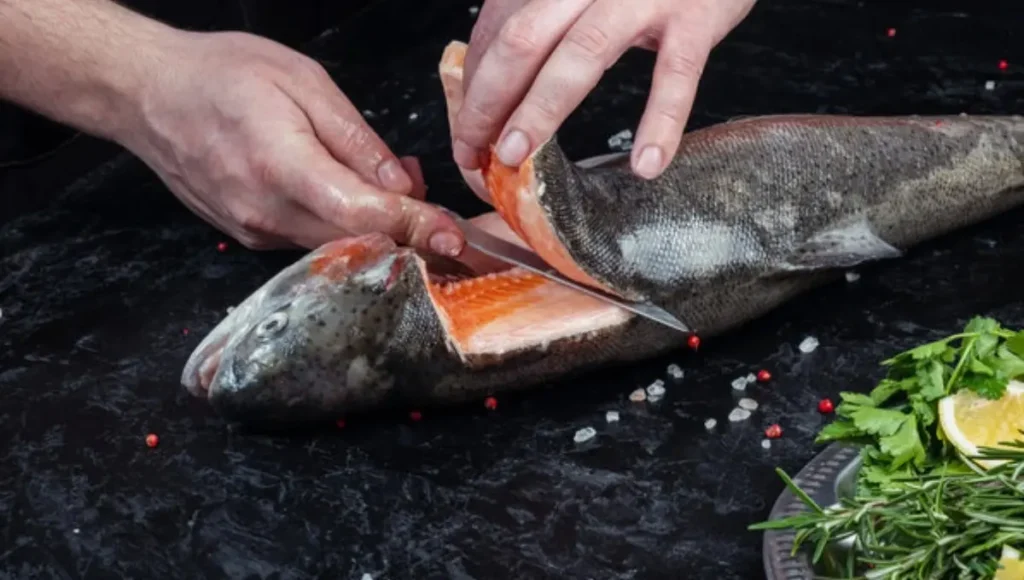
Depending on the type of fish and your cooking intentions, describing your fish may not be necessary. However, it’s often a beneficial approach, not the least because descaling can facilitate the handling and cutting of the fish.
How to descale a fish?
It’s quite simple: using the back of a knife, a dull blade, a spoon, or a scaler, run from the tail towards the head, repeating as needed to remove as many scales as possible. Turn the fish over and replicate the procedure on the opposite side without borrowing language from other sources. Bundle the scraped-off scales in the top layer of your newspaper, and thoroughly rinse the fish (along with your hands and tools).
Open the body and remove all entrails, locating the fish’s anus and cutting it out in a “V” or notch shape.
4. Fins and Head Trimming: Separating Stomach from Fillet
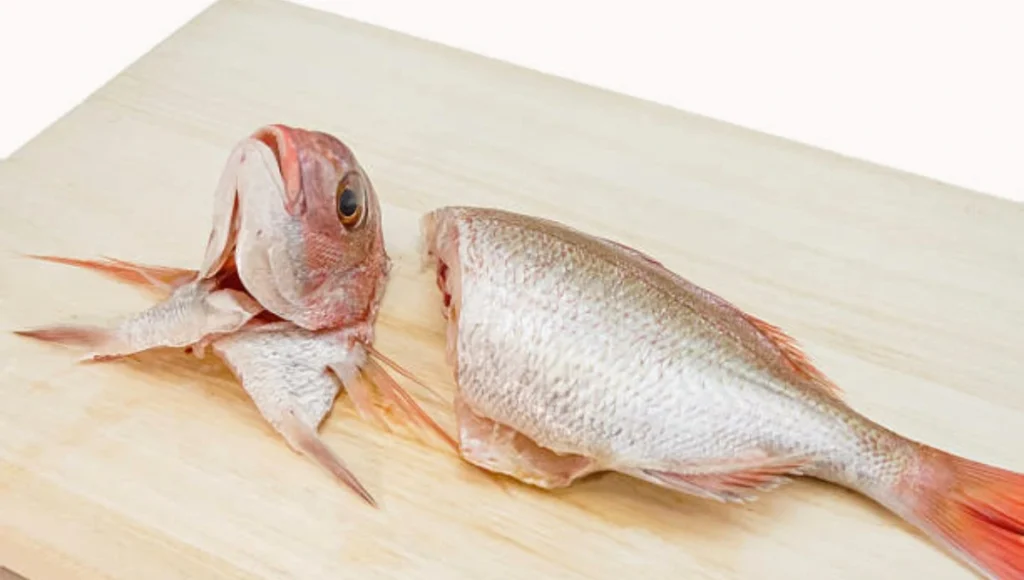
Place the fish with its belly facing upwards, and carefully insert a sharp knife into the anal vent without borrowing language from other sources. Draw the blade toward the head with a shallow incision, taking care not to cut too deeply and risk puncturing the intestines. Stop your cut around the jawline. For smaller fish like trout, you can often run your knife through the slits along the lower jaw, cut toward the front of the fish, grab the jaw and the flap near the gills, and pull them down toward the tail in a swift motion to extract most of the entrails and gills at once.
If not, after the vent-to-jawline cut, open the fish and pull or scoop out all the guts, ensuring to scrape out the kidney and bloodline along the backbone. Some fish have a kidney by the backbone, which you can remove by scraping it out with a spoon or thumbnail.
5. Fins and Head Removal: Fillet Separation from Skin
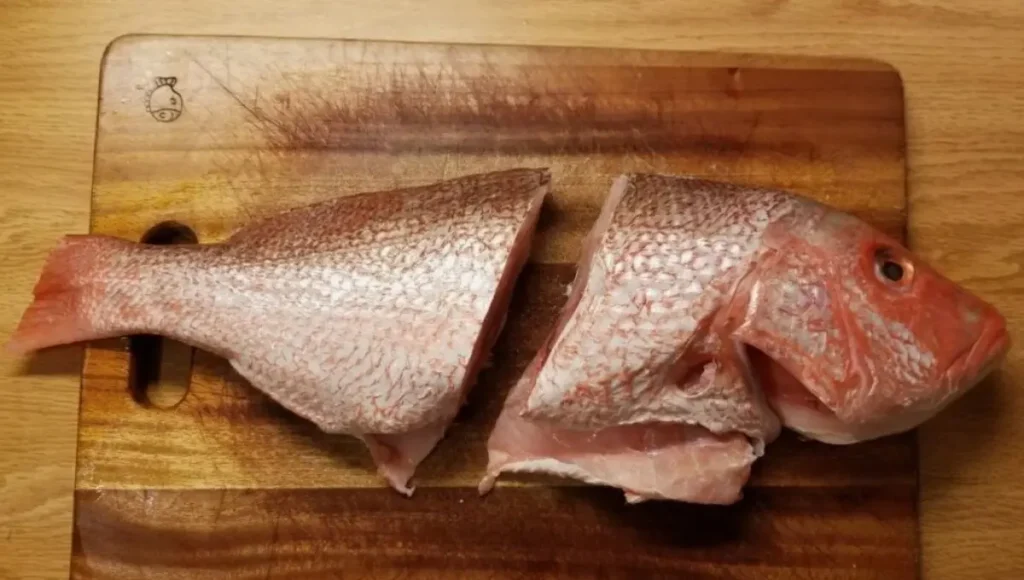
Decide whether to cut off or trim the dorsal and other fins. Optionally, remove the fish’s head by cutting right behind the gills or the pectoral fins at 45-degree angles on either side.
For certain fish, like trout, it’s common to leave the head on during cooking. In such cases, remove the gills if not done during the gutting process. Rinse the cavity thoroughly with a strong stream of water and clean the skin. Some fish have dark tissue lining the abdominal cavity, which can be scraped off to avoid a strong, oily flavor.
6. Rinse and Pat Dry
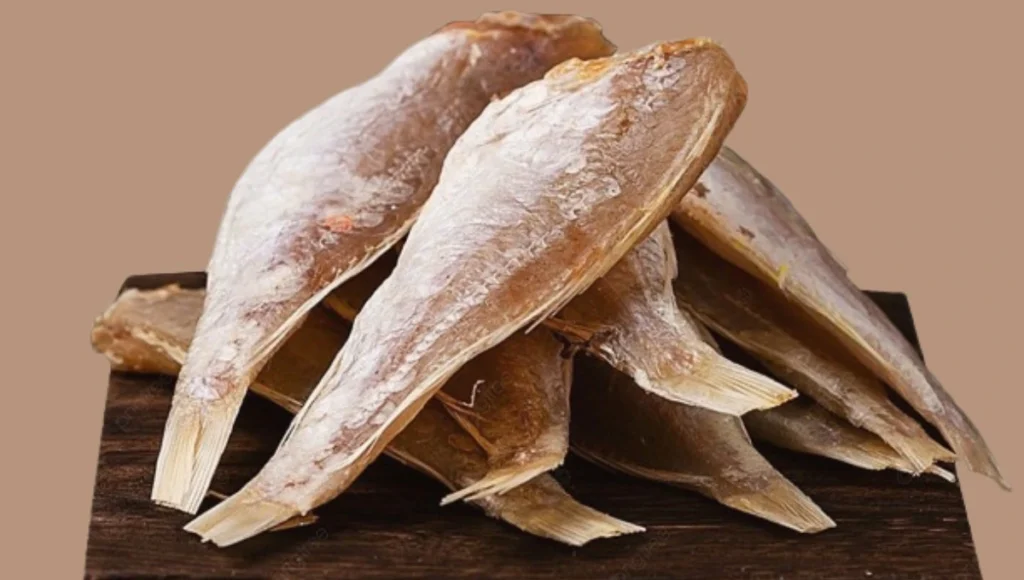
Once you have thoroughly rinsed off the fish under cold running water, inside and out, to remove any remaining blood, entrail bits, and scales, proceed to pat the fish dry with a paper towel. Ensure the fish is adequately dried to facilitate the next steps in your preparation process.
If needed, repeat this rinsing and patting dry process until the fish is clean and free of any residual impurities. This step is crucial for enhancing the quality and flavor of the final dish.
7. Cook and Indulge

If you’re opting to cook the splendid fish whole, perhaps butterflied for a delectable pan-fried trout, or if you prefer fillets (which become remarkably easy with practice), or in the case of a larger, meatier fish, carving out steaks — the choice is yours. Whether or not you decide to skin your fillets or steaks depends on your culinary preference.
After completing the fish preparation, ensure to promptly clean your fish-cleaning table. Collect the guts, heads, and scales, and dispose of them properly. Now, your impeccably cleaned fish is ready to be cooked to perfection.
Frequently Asked Questions
Conclusion
Mastering the art of cleaning a fish is an essential skill for any angler or seafood enthusiast. The detailed top 7 step-by-step guides provide a comprehensive approach to efficiently and effectively clean a fish. From researching the fishing area to choosing between whole fish, fillets, or steaks, each step contributes to a successful cleaning process.
The importance of handling fish with caution due to sharp fins and teeth is emphasized, ensuring safety throughout the cleaning procedure. Considerations for potential contaminants like mercury highlight the need for prior research.
Whether you are a beginner or an experienced fisherman, these guides offer valuable insights into the nuances of cleaning, filleting, and preparing fish. Following these meticulous steps not only enhances the flavor and quality of the final dish but also promotes responsible and sustainable fishing practices. Happy fishing and enjoy your freshly cleaned catch!
